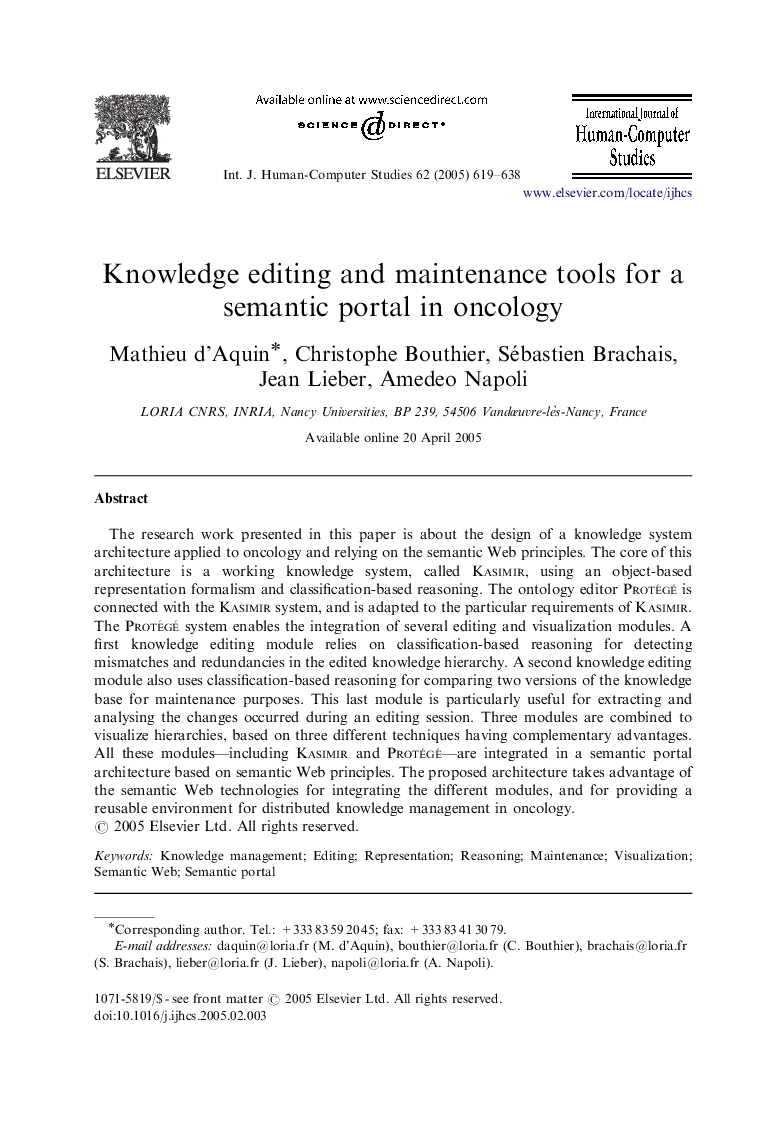| Article ID | Journal | Published Year | Pages | File Type |
|---|---|---|---|---|
| 9652512 | International Journal of Human-Computer Studies | 2005 | 20 Pages |
Abstract
The research work presented in this paper is about the design of a knowledge system architecture applied to oncology and relying on the semantic Web principles. The core of this architecture is a working knowledge system, called Kasimir, using an object-based representation formalism and classification-based reasoning. The ontology editor Protégé is connected with the Kasimir system, and is adapted to the particular requirements of Kasimir. The Protégé system enables the integration of several editing and visualization modules. A first knowledge editing module relies on classification-based reasoning for detecting mismatches and redundancies in the edited knowledge hierarchy. A second knowledge editing module also uses classification-based reasoning for comparing two versions of the knowledge base for maintenance purposes. This last module is particularly useful for extracting and analysing the changes occurred during an editing session. Three modules are combined to visualize hierarchies, based on three different techniques having complementary advantages. All these modules-including Kasimir and Protégé-are integrated in a semantic portal architecture based on semantic Web principles. The proposed architecture takes advantage of the semantic Web technologies for integrating the different modules, and for providing a reusable environment for distributed knowledge management in oncology.
Related Topics
Physical Sciences and Engineering
Computer Science
Artificial Intelligence
Authors
Mathieu d'Aquin, Christophe Bouthier, Sébastien Brachais, Jean Lieber, Amedeo Napoli,
